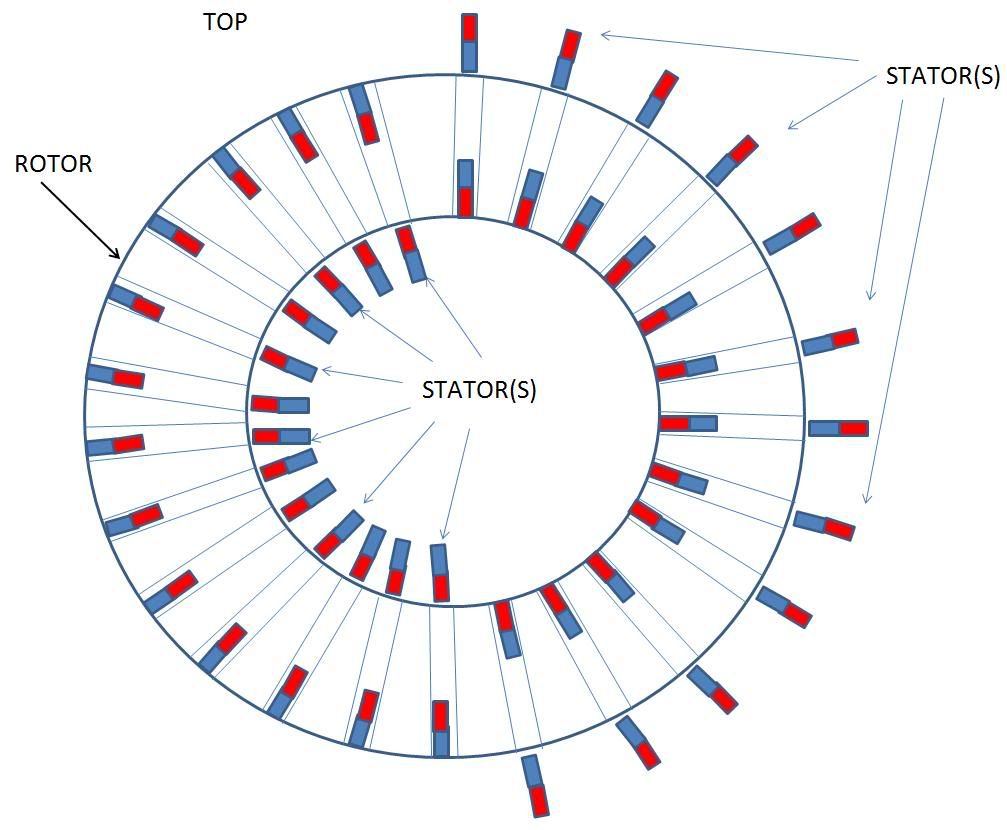MAGNETIC GRAVITY WHEEL!
We all know like poles of magnets repel each other.
Imagine that the magnets below are cylindrical
and travel freely within tubes attached to the wheel.
So, by placing the like poles of a magnet on the inside
of a spinning wheel, the magnets (weights) are CONSTANTLY
forced to the outer perimeter of the wheel.
Similarily, by placing the like poles of a magnet on the outside
of a spinning wheel, the magnets (weights) are CONSTANTLY
forced to the inner perimeter of the wheel.
The unbalanced weight should keep the wheel spinning.
Centrifugal forces may make it harder to keep the weights
to the inside, but larger stator magnets should help overcome that.
Thoughts? Look simple enough? Am I missing something?
Don't forget to check out my other gravity idea here:
http://www.energeticforum.com/renewa...er-anyone.html

We all know like poles of magnets repel each other.
Imagine that the magnets below are cylindrical
and travel freely within tubes attached to the wheel.
So, by placing the like poles of a magnet on the inside
of a spinning wheel, the magnets (weights) are CONSTANTLY
forced to the outer perimeter of the wheel.
Similarily, by placing the like poles of a magnet on the outside
of a spinning wheel, the magnets (weights) are CONSTANTLY
forced to the inner perimeter of the wheel.
The unbalanced weight should keep the wheel spinning.
Centrifugal forces may make it harder to keep the weights
to the inside, but larger stator magnets should help overcome that.
Thoughts? Look simple enough? Am I missing something?
Don't forget to check out my other gravity idea here:
http://www.energeticforum.com/renewa...er-anyone.html


Comment